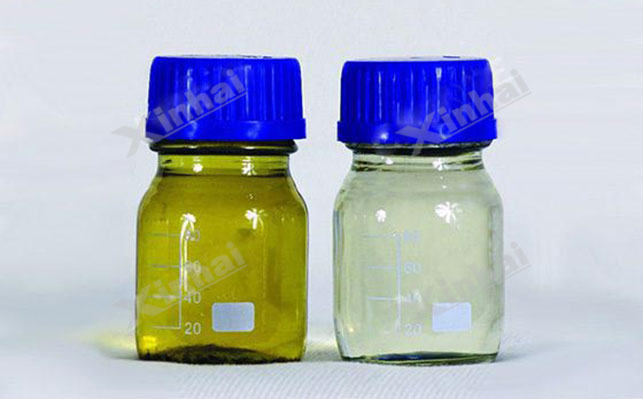
15311826613
Click to add WeChatCopper-molybdenum ore is a kind of non-ferrous metal and an important mineral resource for obtaining copper and molybdenum. At present, the commonly used copper molybdenum beneficiation process is mainly based on flotation. In the process, the selection of flotation method and flotation agent is particularly important. This article will mainly introduce the commonly used agents, combined agents and new agents developed for copper-molybdenum ore.
The commonly used collectors for molybdenum ore are hydrocarbon oils. With the continuous decrease in the grade of molybdenum ore, the use of hydrocarbon oil collectors can no longer obtain high-quality molybdenum concentrate in some beneficiation plants. Studies have found that the surface tension of non-polar hydrocarbon oil increases after the action of a magnetic field, and its dispersibility in water is enhanced, so that hydrocarbon oil can be better adsorbed on the surface of molybdenite.

There are usually two types of combined collectors, one is a combination of different hydrocarbon oils, and the other is a combination of hydrocarbon oils and polar collectors. The use of combined reagents can effectively improve the recovery rate of molybdenite, and has the following advantages: improve the flotation concentrate index; improve the adaptability of the collector, reduce the amount of collector, and reduce costs; expand the range of collector types and reduce the consumption of main drugs.
In recent years, kerosene has been difficult to purchase, and most hydrocarbon oil collectors have the disadvantages of being difficult to dissolve in water and poorly dispersed in the slurry. New collectors with low prices and high efficiency have become a research hotspot.

New molybdenite collector DT-1, compared with xanthate and kerosene, DT-1 has good molybdenite collection and strong selectivity, and the use of DT-1 can reduce the amount of water glass by 60%. The closed-circuit test obtained a molybdenum concentrate with a molybdenum grade of about 53% and a recovery rate of about 95%.
Molybdenum ore depressants are rarely used, mainly wood sulfonate, dextrin and carboxymethyl cellulose (CMC). The inhibition of molybdenite by wood sulfonate is caused by the combined effect of electrostatic force and chemical bond between sulfonate and molybdenite surface.

Sodium thioglycolate is the main organic inhibitor of copper sulfide ore, with the molecular formula of HSCHzCOONa. The inhibition mechanism of sodium thioglycolate is that the -Hs group undergoes chemical adsorption on the surface of chalcopyrite, and the -COOH group undergoes ion exchange adsorption with the mineral, preventing the collector from interacting with copper sulfide and increasing the hydrophilicity of the mineral surface.

Available inorganic inhibitors are mainly sodium sulfide, including sodium sulfide and sodium hydrosulfide. Their inhibition mechanism for copper sulfide is generally believed to be hydrolysis to produce HS- ions. HS- ions exclude xanthate adsorbed on the surface of copper sulfide ore and are also adsorbed on the surface of copper sulfide ore, increasing the hydrophilicity of copper sulfide ore, thereby inhibiting copper sulfide.
In addition to the above inhibitors, there are also some combined inhibitors, such as YF851 inhibitor, which is composed of two sulfide inhibitors, and the inhibition mechanism is similar to that of sulfiding agent.